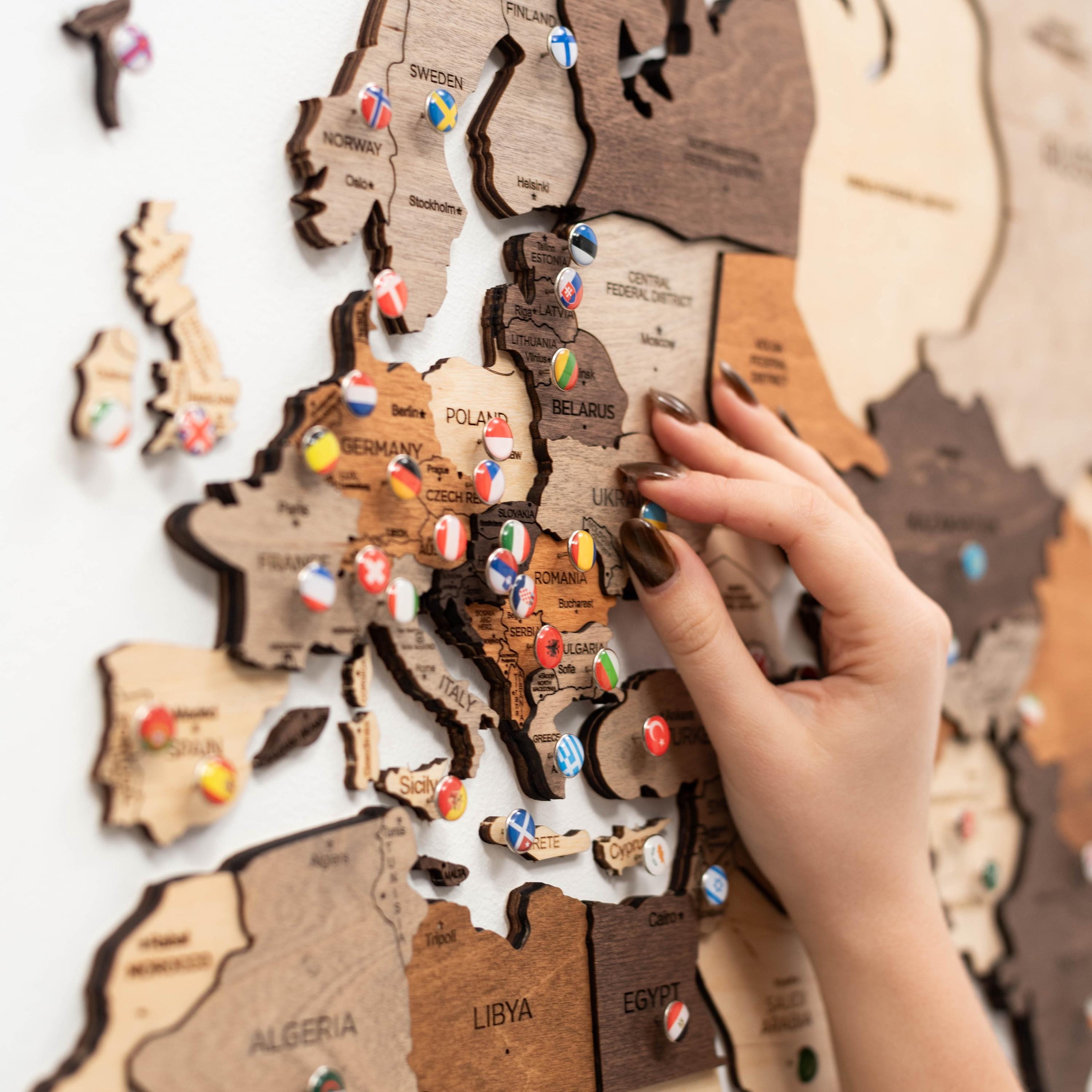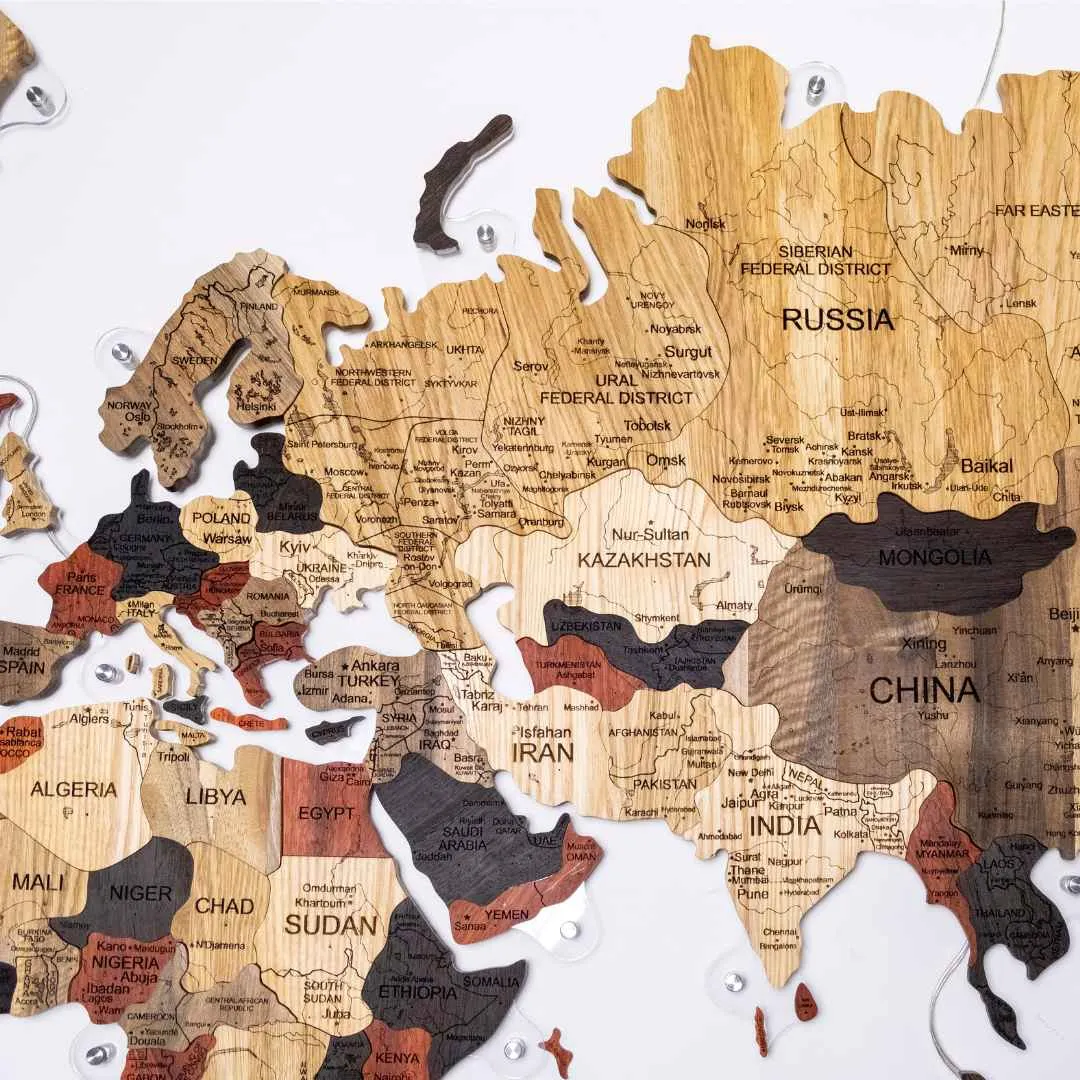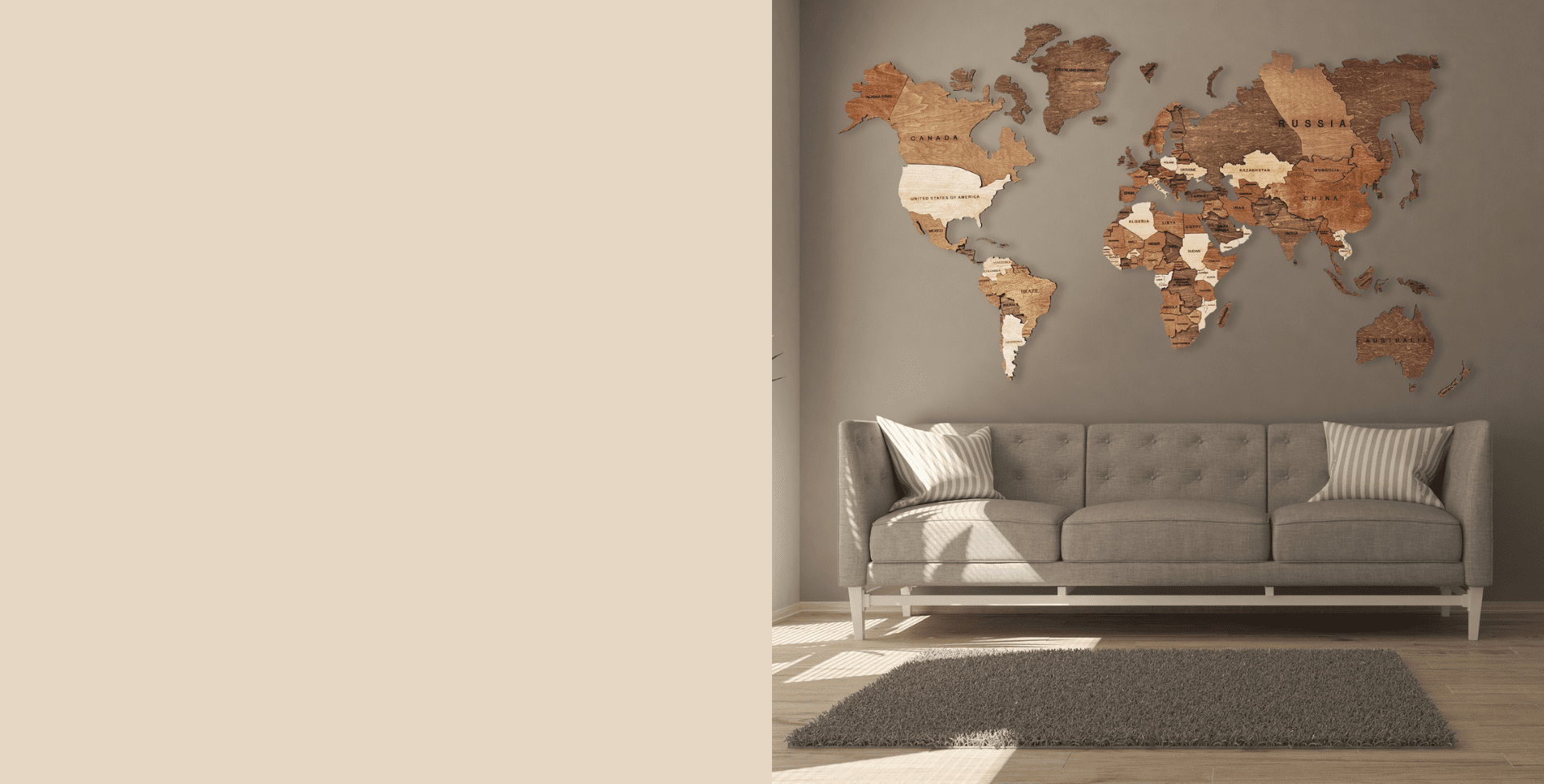Revealing the Charm of the Map of the World Wood – An Artistic Journey Through Our Planet’s Wonders

Travel, exploration, and a desire to understand the vastness of our planet have inspired countless adventurers and home decor enthusiasts alike. Today, one of the most captivating ways to combine these passions is through the map of the world wood. This stunning piece not only encases the physical geography of our earth but also embodies warmth, craftsmanship, and personality. Whether you’re a seasoned traveler, a history buff, or someone who simply appreciates fine art, a wooden map offers a unique, stylish way to showcase your love for the world.
In this comprehensive guide, we delve deep into the allure of the map of the world wood, exploring its history, design features, aesthetic appeal, and how it can transform your living space. We will also present practical insights on how to choose, decorate, and personalize this beautiful decor element, highlighting relevant products that naturally fit into this narrative.
The Evolution and Cultural Significance of Wooden World Maps

Understanding the origins and cultural value of wooden world maps can deepen our appreciation for these artistic pieces. These maps are more than just decorative objects—they symbolize curiosity, learning, and mutual understanding.
The Historical Roots of Mapping the World in Wood

The tradition of map-making dates back thousands of years, with some of the earliest depictions created by civilizations like the Babylonians, Greeks, and Chinese. Initially, maps were etched on stone or fabric, serving navigational needs and diplomatic representations.
Wooden maps, however, gained popularity in the medieval and Renaissance periods as a portable and durable medium for cartography. The craft of crafting wooden maps blossomed further during the Age of Exploration, when explorers returned with tales and treasures from distant lands. These maps often served as educational tools and symbols of wealth and knowledge.
Today, the map of the world wood pays homage to that rich history. It embodies the craftsmanship passed down through generations, transforming detailed geographical data into tactile, artful displays. Moreover, thematically, wooden maps carry a nostalgic sentiment—reminding us of a time when exploration was daunting yet inspiring.
Cultural Significance and Modern Interpretations

In many cultures, the map of the world has traditionally signified conquest, discovery, and expansion. But in contemporary society, there’s an increasing shift towards maps that emphasize connection, diversity, and environmental awareness.
Wooden world maps, in particular, evoke a sense of harmony and craftsmanship. They’re symbols of appreciation for natural materials, craftsmanship artistry, and sustainability. Many contemporary designs feature eco-friendly woods, engraved details, and customizable elements, making them meaningful additions to homes or offices.
Furthermore, the map of the world wood is now often used as an educational tool in classrooms or as a family heirloom, reflecting a collective journey through life and travel. Its cultural evolution mirrors a broader societal shift toward environmental consciousness and global citizenship.
The Role of Artistic Expression in Wooden Maps

While traditional maps prioritize accurate geographic portrayal, modern wooden maps often incorporate artistic elements—such as stylized fonts, antique finishes, and decorative outlines—that blend cartography with design. This artistic approach makes them versatile decor pieces that can harmonize with various interior design styles, from rustic to modern minimalism.
If you’re inspired by the map of the world wood, consider its potential not just as a decor item but as a canvas for storytelling. You can mark visited places with push pins, add photos, or even customize the map with personal annotations, turning it into a living record of your adventures.
Design Features and Craftsmanship of Wooden World Maps

The appeal of the map of the world wood lies largely in its design features and the expert craftsmanship that goes into each piece. Today, with advances in manufacturing and a revival of artisanal techniques, wooden maps are more detailed, durable, and customizable than ever.
Types of Wooden Maps and Their Materials

The variety of wooden maps available on the market provides options for every taste and interior space. The primary differentiator is the type of wood used, which affects durability, appearance, and pricing.
Common woods include:
| Type of Wood | Characteristics | Typical Uses |
|---|---|---|
| Bamboo | Sustainable, lightweight, light-colored | Modern, eco-friendly decor |
| Walnut | Rich, dark brown, highly durable | Elegant, luxurious settings |
| Cherry | Warm tones, develops a deeper hue with age | Classic, timeless decor |
| Maple | Light, smooth grain, versatile | Contemporary, subtle accents |
| Oak | Strong, prominent grain, durable | Rustic, vintage styles |
Manufacturers combine these woods with precision laser engraving techniques to create intricate borders, country outlines, and textures.
The assembly process often involves layering and carving, which produces a 3D effect that enhances visual and tactile appeal. Some maps are designed as wall hangings, while others come in modular pieces that can be rearranged.
Design Styles: From Modern Minimalism to Vintage Charm
Wooden maps have evolved to meet diverse aesthetic sensibilities. Here are the predominant design styles:
- Minimalist Modern: Clean lines, subtle engravings, often monochrome or light-colored woods for a sleek look.
- Rustic/Vintage: Weathered finishes, darker woods, and distressed details evoke a nostalgic charm that complements vintage or farmhouse interiors.
- Art-Deco and Pop-Art: Incorporate bold outlines, colorful accents, and creative framing for a statement piece.
- Interactive and Personalized: Some maps include features such as push pins, photo frames, or writable surfaces for marking visited locations.
Choosing the right style depends largely on your existing decor and personal taste. The map of the world wood can serve as a striking centerpiece or a subtle background element—the key is harmony with your interior.
Craftsmanship and Personalization
Handcrafted wooden maps exemplify artistry and attention to detail. Artisans often carve intricate borders, engraved country outlines, and textured terrain features, giving each piece a distinct personality.
Customization options are increasingly popular, allowing you to select woods, finishings, and even personalized engravings. For instance, you can have a family name or a special date engraved to make the map uniquely yours.
Moreover, some manufacturers offer modular maps, allowing you to add or remove regions, creating a bespoke representation of your travels or heritage. Such personalization transforms the map from a mere decoration into a cherished family artifact.
Practical Considerations When Choosing a Wooden Map
When selecting a map of the world wood, measure your intended space, considering the balance between size and visual impact. Thicker, three-dimensional maps create a more tactile experience but may require more wall space.
It’s essential to consider the finishing—whether you prefer the natural wood vibe or a painted/stained surface. The choice influences the mood of your room and how well the map integrates with other decor elements.
Transforming Your Space with a Wooden World Map

Installing a wooden map of the world can dramatically influence the ambiance of your home or office. It becomes a conversation starter, an educational tool, and an inspiring piece that sparks curiosity.
Placement and Room Suitability
The ideal location for a map of the world wood depends on your goals, available space, and interior styling. Common spaces include:
- Living rooms
- Offices and studies
- Children’s bedrooms
- Hallways and entryways
- Educational institutions and libraries
In a living room, a large wooden map can serve as a captivating focal point above the sofa or fireplace. It complements rustic and modern interiors equally well, especially when paired with other natural materials like wood furniture and textiles.
In an office or study, a map fosters inspiration and educational value, prompting travel planning and cultural awareness. For children’s rooms, personalized maps with labeled countries aid learning and add a playful element.
Enhancing Decor with Complementary Elements
To elevate your map of the world wood display, consider surrounding it with elements that echo the map’s natural appeal. For example, vintage globes, travel souvenirs, or framed photographs of destinations can create a thematic gallery.
Adding coordinate pins, notes, or photographs directly onto the map personalizes the space further. You might mark visited countries or specify future destinations, turning your map into a dynamic travel journal.
Moreover, lighting fixtures such as spotlights or LED strips can highlight the map, emphasizing its craftsmanship and creating a warm, inviting glow in the room.
Practical Tips for Mounting and Maintenance
Before installing, ensure your wall can support the map’s weight. Use appropriate wall anchors and mounting hardware specified by the manufacturer.
Cleaning and maintenance are straightforward—use a soft, dry cloth to wipe dust from the surface. Avoid using harsh chemicals, as they can damage wood finishes. With proper care, a wooden map can remain a striking piece for decades.
The Emotional Impact of Owning a Wooden World Map
Owning a map of the world wood embodies more than aesthetic appeal. It symbolizes curiosity, adventure, and the realization of dreams. It’s a reminder of places seen, stories shared, and journeys yet to come.
Displaying such a map can reinvigorate your passion for exploration, inspire future travels, and evoke nostalgic memories of past adventures. For many, it becomes the centerpiece of family gatherings, storytelling evenings, and personal reflections.
The Personal Journey with a Wooden World Map: Customization and Future Trends

In an era where personalization and eco-conscious choices are prioritized, the map of the world wood serves as a perfect canvas for individual expression.
Customizing Your Wooden Map: Making It Uniquely Yours
Custom features include engraved family names, quotes, or significant dates. Personalization options extend to color accents, regional labeling, and modular configurations. Some brands even allow you to choose the wood grain pattern or finish to match your aesthetic.
This process transforms a generic decor item into a family heirloom or a thoughtful gift—perhaps a wedding or anniversary present for globe-trotting loved ones.
Interactive and Tech-Integrated Wooden Maps
Emerging trends include combining traditional craftsmanship with modern technology. Some wooden maps incorporate QR codes linked to travel blogs, or built-in LED lights highlighting specific regions.
Push pins and writable surfaces allow users to mark past trips or upcoming destinations actively. These interactive elements foster engagement and make the map a living document of your journeys.
Eco-Friendly and Sustainable Choices
Sustainability is increasingly at the forefront of consumer choices. Many artisans source wood from responsibly managed forests, ensuring environmental integrity. Wooden maps crafted with eco-friendly materials and processes contribute to conservation efforts while providing durable, beautiful decor.
Choosing a map of the world wood made from bamboo, for example, offers a sustainable option that’s lightweight and visually appealing. Additionally, minimal packaging and environmentally conscious shipping further reduce ecological footprints.
Future Trends: Creating a Global Community of Travelers and Decor Enthusiasts
As the world becomes more interconnected, the map of the world wood increasingly functions as a social and cultural catalyst. Sharing maps on social media, exchanging ideas on customization, and participating in travel challenges foster an engaged community.
Moreover, the increasing integration of augmented reality (AR) might lead to maps that communicate stories, cultural facts, or travel histories through digital overlays, blending craftsmanship with cutting-edge technology.
Conclusion

The map of the world wood beautifully embodies the spirit of exploration, craftsmanship, and personal storytelling. Its historical roots, artistic versatility, and modern innovations make it a timeless addition to any interior, inspiring curiosity and wanderlust. Whether kept as a centerpiece or a personal travel record, this intricate piece connects us to the vast, diverse, and wondrous world we inhabit. Carefully selected for quality and personalized for uniqueness, a wooden map transforms living spaces into galleries of dreams and adventures—an enduring tribute to humanity’s collective journey across time and space.
